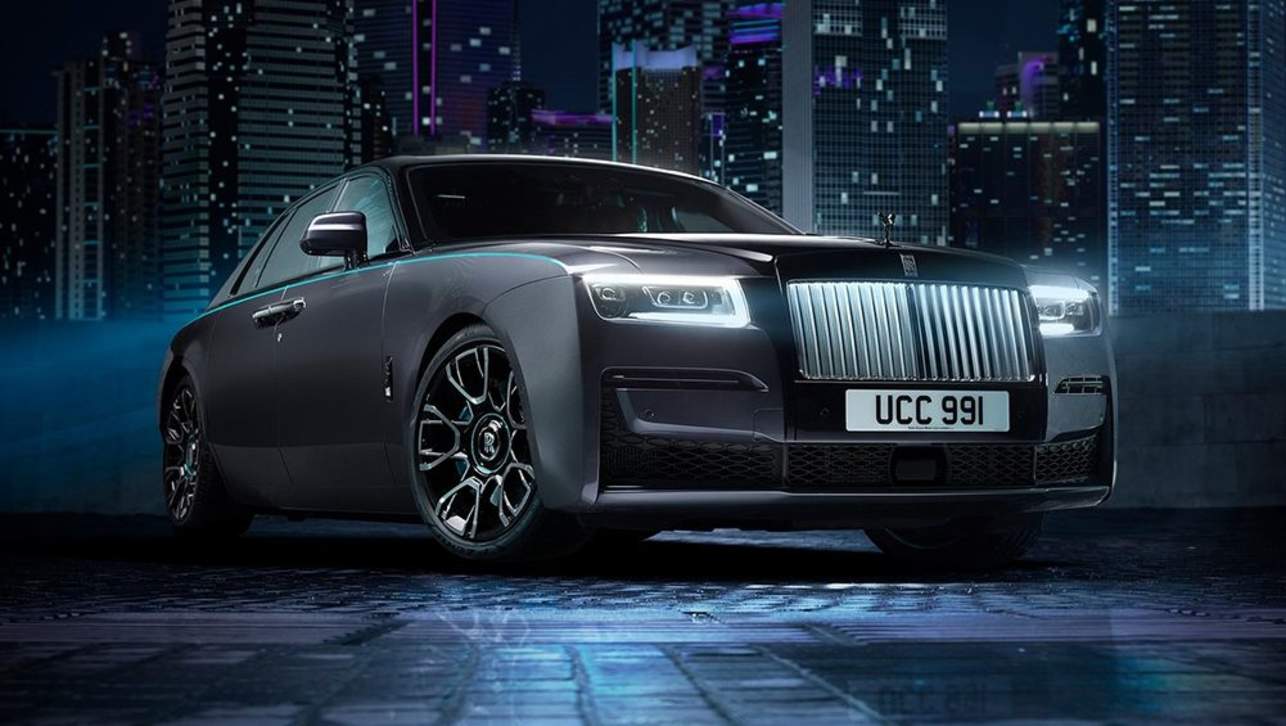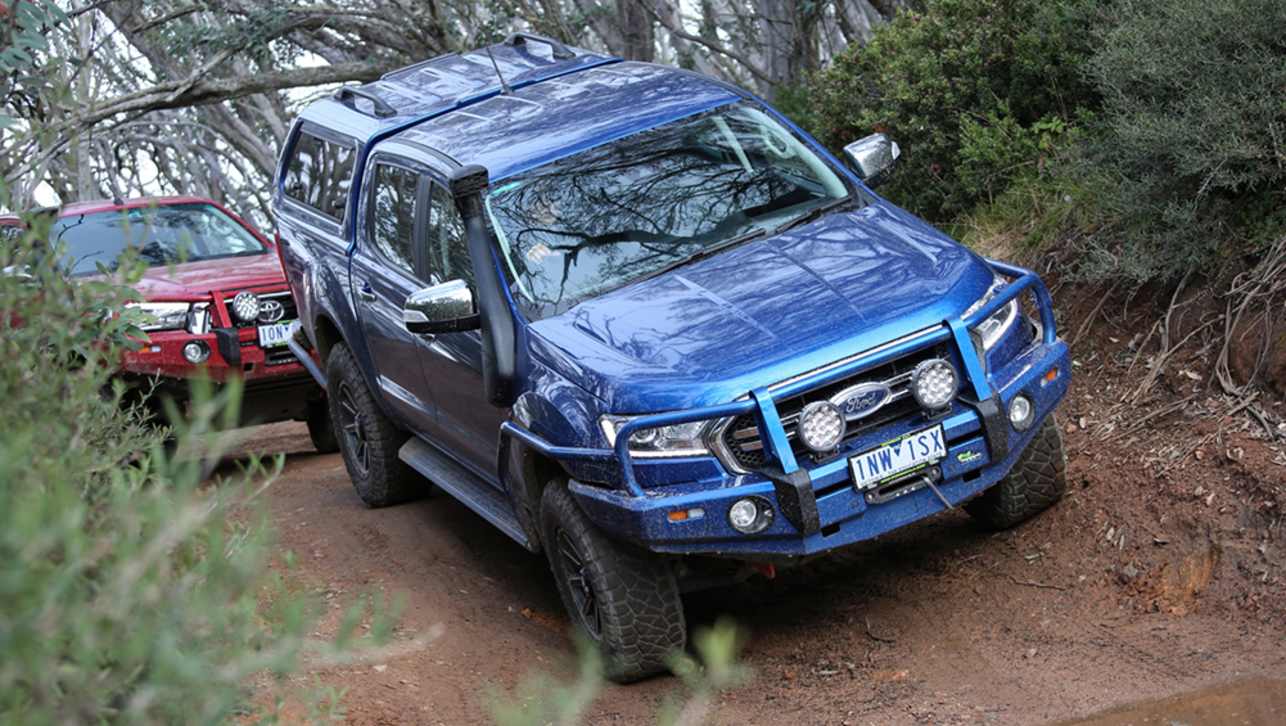There are several reasons to upgrade the suspension of your Ford Ranger (or any other type of off-road vehicle). Better ground clearance, more towing or load carrying capacity or simply a tougher look are the main reasons and they all have their pros and cons.
The Ranger in its various guises has a pretty conventional suspension layout, so there’s lots of choice to upgrade it. Ford Ranger front suspension is by coil springs and wishbones, while the Ford Ranger rear suspension consists of a live (solid) axle with leaf springs. Both these set-ups are tough and serviceable.
The most common upgrade is the Ford Ranger suspension upgrade for towing. The Ranger ute has always been a good tow vehicle, and upgrading the suspension can give it even more ability to tow safely and with ease.
The problem is you can unwittingly exceed the vehicle’s Gross Combination Mass (GCM) if you hook up a big trailer then load the vehicle itself.
In extreme cases (but they do exist) a ute hauling its maximum towed-load limit might have less than 100kg of payload remaining, and that includes the driver, passengers, fuel, luggage and accessories fitted to the vehicle.
That’s where a GCM upgrade comes in. It allows for more payload with the same towing limit. This is more than just a suspension kit for Ford Ranger models; this is a legal and insurance issue and requires paperwork from an engineer.
However, the rules can seem pretty murky and vary from state to state. Some engineers will tell you there’s no such thing as a legal GCM upgrade, others – and plenty of aftermarket suppliers – would disagree with this.
.jpg)
The critical thing to say is that you should check out carefully what your state’s authorities will and will not allow in terms of a GCM upgrade. In many cases, a brand-new, never registered vehicle can be legally upgraded for a higher GCM, but not a car that has already been registered. That said, some states will allow an engineer to certify a GCM upgrade on a previously registered vehicle, but will require varying degrees of paperwork to confirm its legality.
Either way, in most cases, even a legal GCM upgrade won’t amount to a towing limit increase; it simply allows for more payload on the towing vehicle with the same trailer limit. Towing limit increases are generally not allowed.
But the Ranger is a great example of why you might want a GCM upgrade if you tow big loads. For example, the Ranger Sport 3.0 has a GVM of 3280kg and a towing capacity of 3500kg. Add those up and you get a weight of 6780kg which is well above the same vehicle’s GCM of 6400kg. So, by increasing the GCM, to, say, 6800kg, you can carry the maximum payload and still tow the maximum towing allowance. Again, though, this upgrade does not increase the mass you may tow.
A Gross Vehicle Mass (GVM) is another popular suspension upgrade for the Ranger. Many tradies have found that when they have a crew on board, lunch and a full tank of fuel, there’s not much payload left to stay within the vehicle’s GVM limit. The solution then is to upgrade the suspension and have the vehicle certified for the higher GVM to keep it legal.
.jpg)
GCM and HVM upgrades will generally involve new springs, dampers, shackles, U-bolts and other hardware, but may also involve greaseable pins and shackles to improve durability of what is now a very hard-working system. But you might also find you need a tail-shaft extension (as the distance from the output shaft of the transfer-case and the differential yoke is now longer.
Quality upgrade kits might also include new engine hardware including (in the case of the 3.2-litre five-cylinder Ranger engine) a new radiator and bigger intercooler. That’s because the engine – and not just the suspension – is now doing more work.
Of course, some Ranger owners just want a lifted vehicle to make it easier to cross rough ground where clearance is an issue. Again, there are different rules and regulations from state to state, but a 50mm (two-inch) lift in suspension is generally viewed as okay by the authorities and insurance companies (check first, though).
Again, longer, stiffer springs are the main componentry change, but longer dampers and the assorted hardware to fit it all will also be included in a quality kit. It’s also important to know exactly what vehicle you’re dealing with. In many cases, a Ford Ranger PX2 will be the same as the kit for a Ford Ranger PX3 suspension upgrade, but not always, so check the precise specs of your car before ordering a kit.
.jpg)
There are plenty of popular choices out there, including the Dobinson Suspension Ford Ranger suspension upgrade. The Dobinson brand has a great reputation as a local manufacturer of its own springs. The Dobinson kit is available in different heights and, interestingly, will fit both the Ranger 4X4 and 4X2 High-Rider models.
Old Man Emu suspension Ford Ranger kits are another popular choice with backing by Australian off-road giant ARB (which owns the Old Man Emu brand). While some brands concentrate on older Ranger models, Old Man Emu has stayed ahead of the curve by developing a next-gen Ranger suspension upgrade kit.
At the other end of the intended-performance spectrum is the Fox suspension for Ford Ranger models which is skewed towards covering rough ground in a short space of time. The US-made Fox Shocks are at the heart of these packages and, in fact, are standard fitment on the Ranger Raptor. A range of specialist retailers can supply kits that include the high-end shocks as well as the other hardware including springs.
And if you want to develop your own suspension upgrade – and many do – then starting with a known shock absorber product is a good start. That’s where respected brands like Bilstein come into the picture by offering a range of damper solutions that can work with other brands of springs and hardware. This is a bit more leg-work on your part than a complete set-up from a retail brand, but many owners feel the need to tailor every aspect of their set-up. A bespoke set-up including Bilstein suspension Ford Ranger style will likely cost a bit more, but that doesn’t put too many hard-core off-roaders off.
.jpg)
Speaking of money, what does a Ford Ranger suspension upgrade cost?
There are fairly simple lift kits out there for as little as a $1000, or so, but you’ll need to budget for fitting if you can’t do it yourself. For high-end gear and the paperwork to approve a GVM increase, you’re probably looking at closer to $2500 to $3500 and it’s entirely possible to spend $5000 on an upgrade.
At the end of the day, the best Ford Ranger suspension upgrade is the one that does what you need it to do. There’s no point adding a simple lift if you need more payload. This stuff is very vehicle-specific, too. The best suspension for Ford Ranger PX3 models may not completely suit an earlier model with a different driveline. That’s very true in the case of GVM upgrade kits where, depending on the driveline fitted, a more efficient radiator and intercooler is required.


.jpg)


.jpg)

.jpg)
 copy.jpg)
.jpg)

.jpg)
.jpg)


.jpg)


.jpg)
.jpg)
.jpg)
.jpg)
.jpg)

.jpg)

.jpg)


Comments